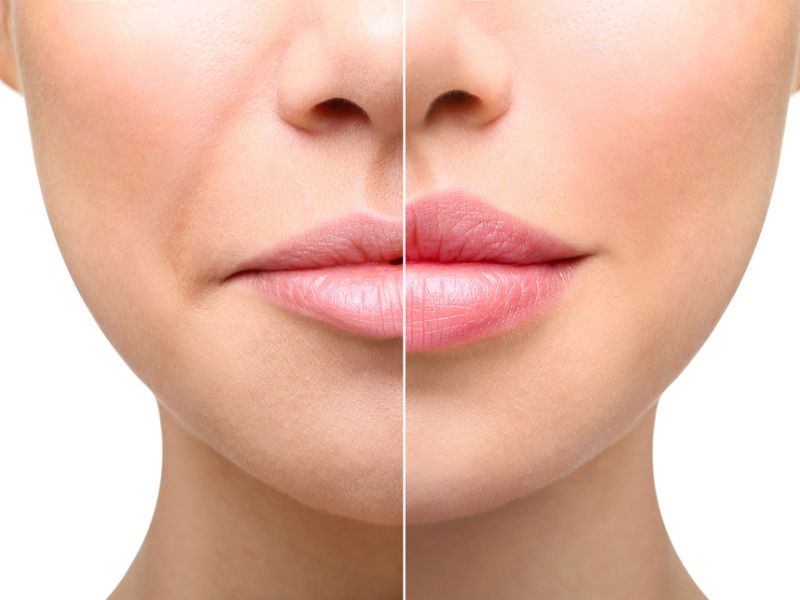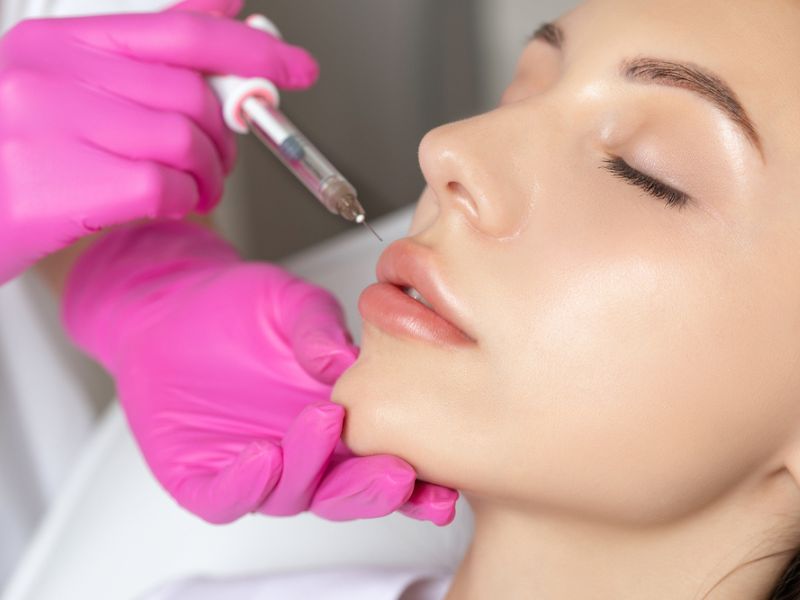There’s a good chance you’ve seen a TikTok video or Instagram post about filler migration if you’re into beauty and social media. Today, more people are changing their appearances and staying ahead of aging by starting aesthetic treatments earlier in life.
Understanding why people get filler in the first place, mainly lip filler, is essential before you fall down the rabbit hole of #fillermigration. Dr Nolle Sherber, M.D., F.A.A.D., a Washington, D.C.-based dermatologist and clinical associate professor at George Washington University, says injectable dermal fillers are volumizing treatments.

Image Credit: Shutterstock/Valentina Razumova
Filler Migration: What Is It?
The term “filler migration” refers to the movement of filler from one area to another. Board-certified plastic surgeon Dr Michael Horn says this occurs when dermal filler migrates from the injection site to another part of the face. It can occur anywhere filler is placed, including the nose, nasolabial folds, and central cheeks.
When Does Filler Migrate?
In rare instances, migration may take years to occur, even though the filler results are immediately visible, depending on the root cause of the problem. Dr Horn says overfilling will be evident almost immediately. It might become apparent in migration when poor technique is used or appointments are not adequately spaced. It can cause lymphatic obstruction and migration if injected too superficially.

Image Credit: Shutterstock/dimid_86
How Does Migrated Filler Look?
Dr Sherber says that filler migration is more noticeable under thin-skinned areas. This technique can create puffiness under the eyes after under-eye filler or a ‘filler moustache’ above the upper lip after lip filler. There are some patients for whom filler migration is okay. With more mature skin, the migrated filler does not cause an aesthetic issue; for instance, it can reduce lip lines by augmenting volume around the lips.
Is It Possible To Prevent Filler Migration?
The best defence against filler migration is going to a trusted pro with extensive experience with filler. Dr Horn recommends seeing a board-certified plastic surgeon or dermatologist for filler injections. Different fillers are appropriate for various facial features depending on the patient’s soft tissue and skin thickness.